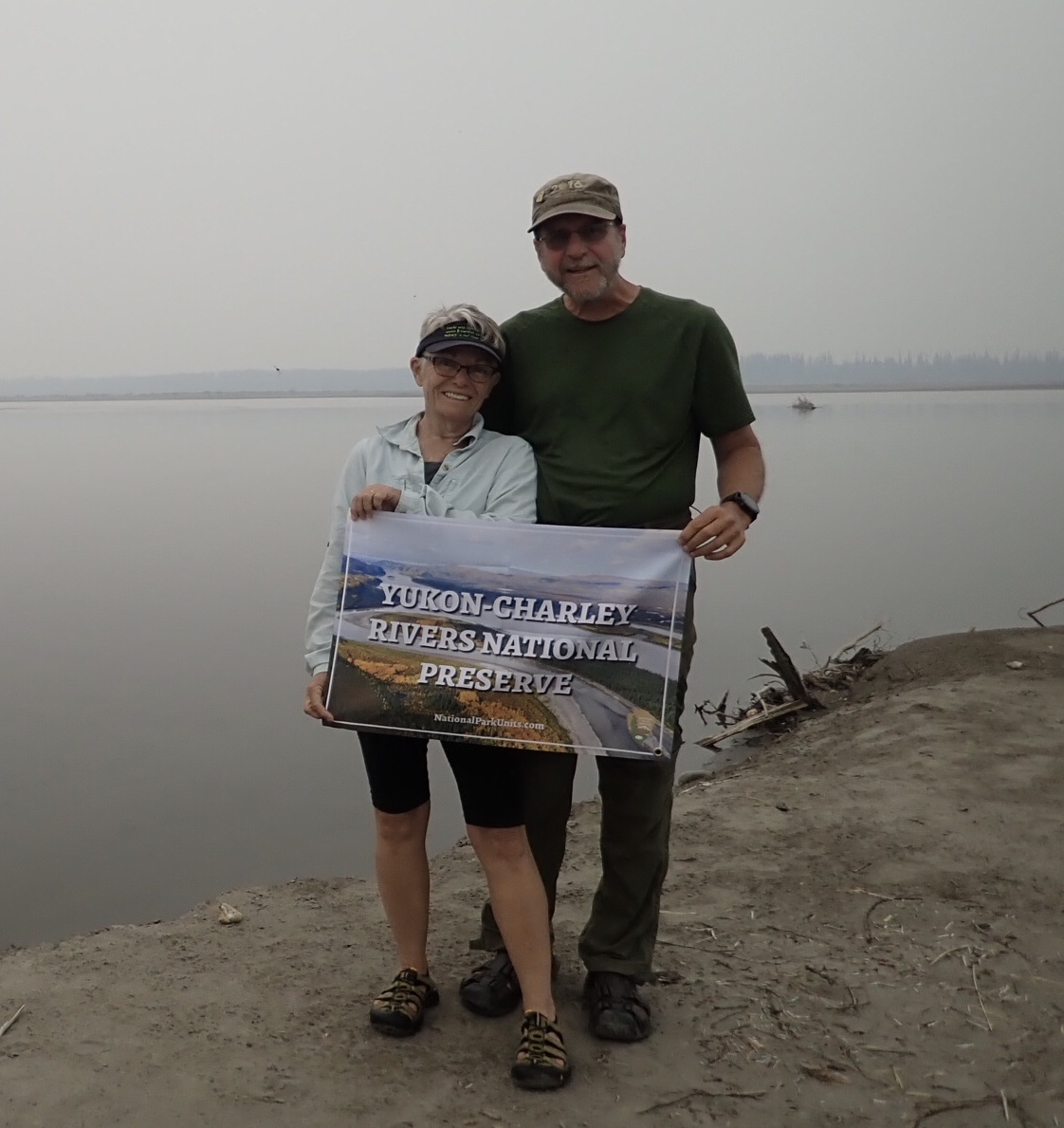Hard to get to: Yukon-Charley Rivers National Preserve
We just returned from a 7 day canoe trip on the Yukon River in the Yukon-Charley Rivers National Preserve. Talk about remote … the only way to get to this preserve is to fly in on a small bush plane, or take a gravel road to either the town of Eagle, Alaska (population 80), an eight hour drive from Fairbanks almost on the Canadian border, or to Circle, Alaska (population 100).
Eagle is 12 miles upstream from the preserve and Circle is 14 miles downstream. From either of these towns, you will still need to take a boat to get into the preserve.
We began our trip at Eagle and then canoed the Yukon River to Circle. This included the entire length of the Yukon River that falls within the National Preserve. That was about 160 miles, with virtually nothing along the way. Just a few remote cabins and one National Park Service site at Coal Creek. Other than that – undisturbed wilderness and total quiet. We weren’t even under a flight path. Total solitude. When you stopped paddling, all you could hear was the silt from the river hitting up against the sides of your boat.
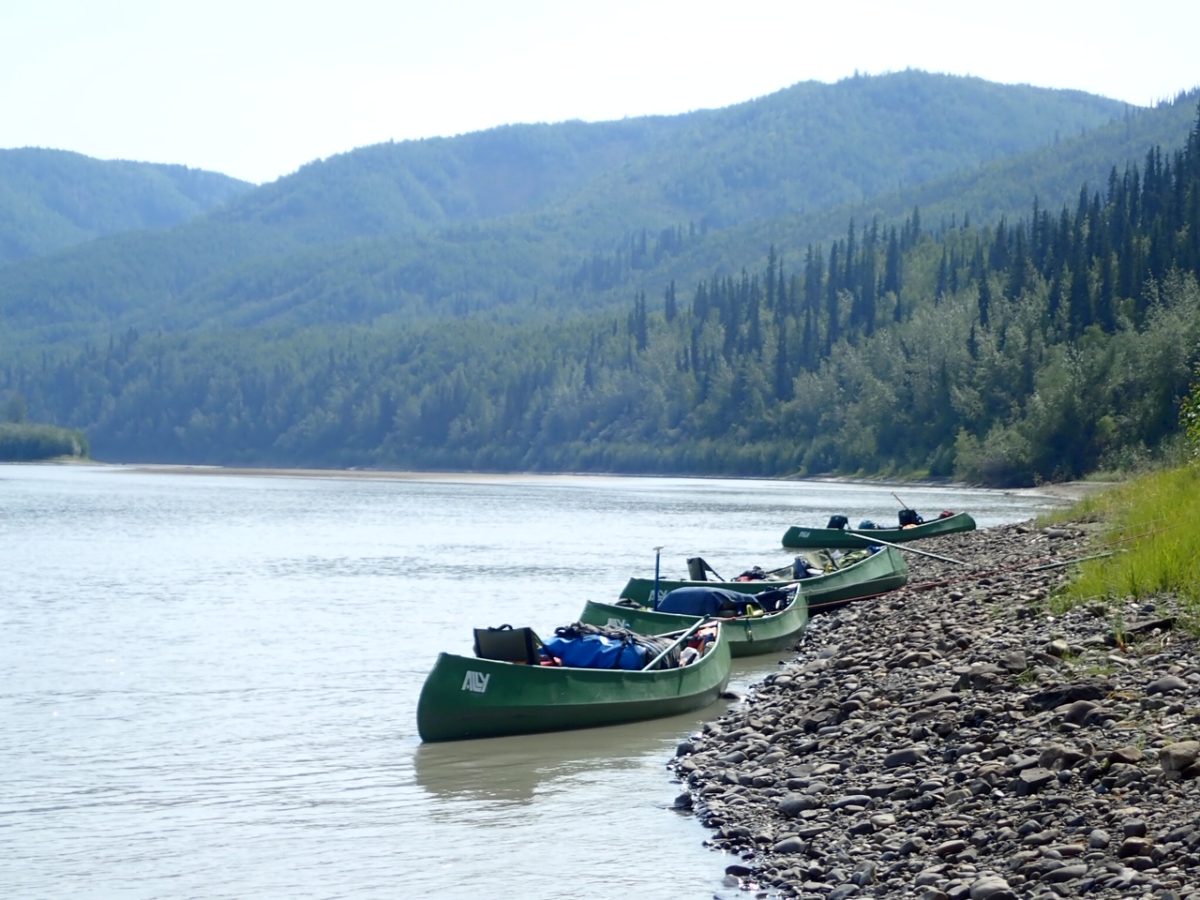
Yukon River Facts
The Yukon River is the 4th longest North American waterway. The portion in Alaska begins at the Canadian border in the Yukon territory and follows a winding path all the way across the state to empty into the Bering Sea. Along the way, there are only three road access points to this river – at Eagle, Circle and off the Dalton Highway at the E.L. Patton Bridge (the only bridge in Alaska that crosses the Yukon River).
The water is silty – a nice chocolate milk brown – and in places the river is so wide you would almost think it is a lake not a river. It is lovely paddling downstream … the river speed when we went was about 5 miles per hour, so even if you pick up your paddles and float, you’ll be moving along pretty quickly.
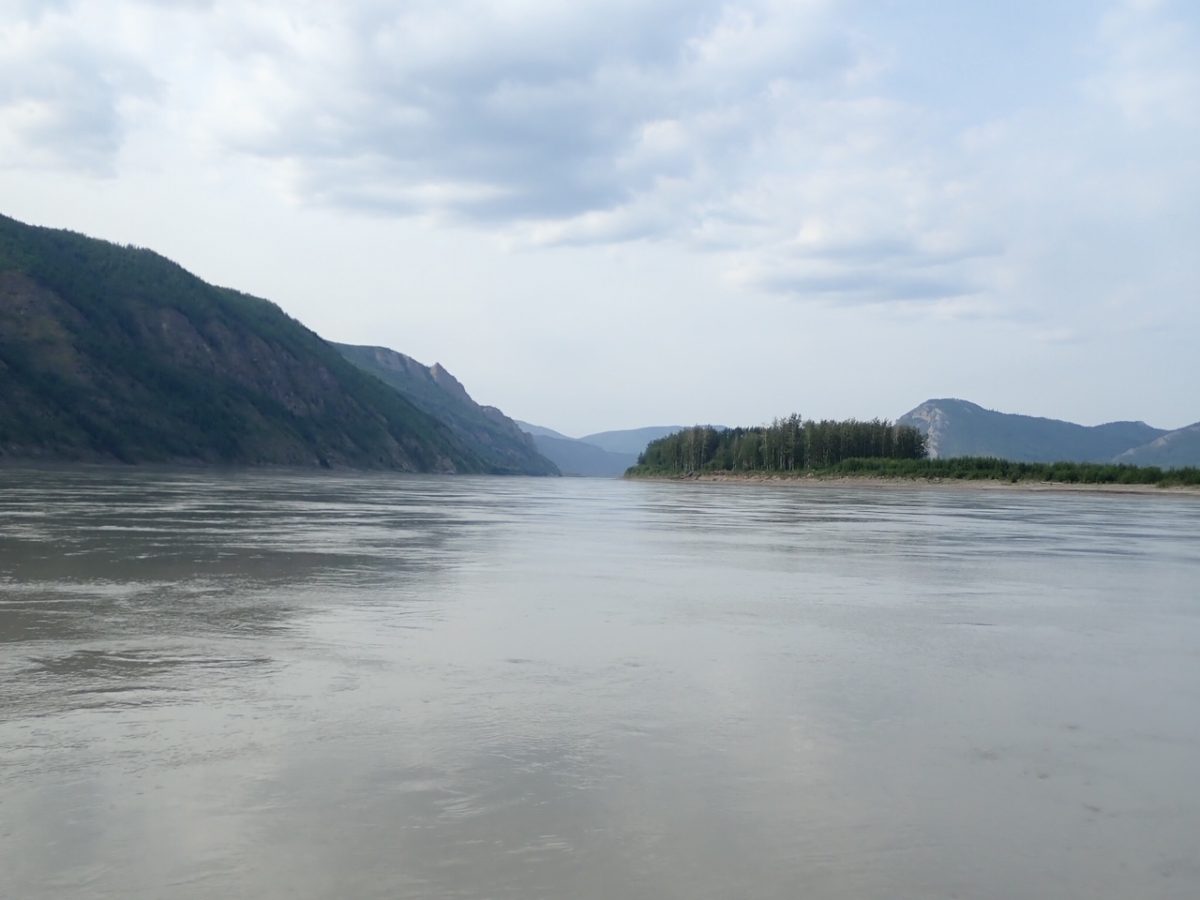
Along the way, you will either camp on gravel bars or stay in public use cabins managed by the National Park Service within the preserve. There are a couple places to stay in Eagle, but other than there, accommodations will be pretty primitive.
We stayed at the Falcon Bed & Breakfast in Eagle and it was lovely. A great way to kick off our river trip, but after that every other night was in a tent along the river. We stuck to gravel bars midstream because there was usually a nice breeze and not too many bugs. Get into any brush and you will quickly get to know the Alaskan bird (the mosquito)!
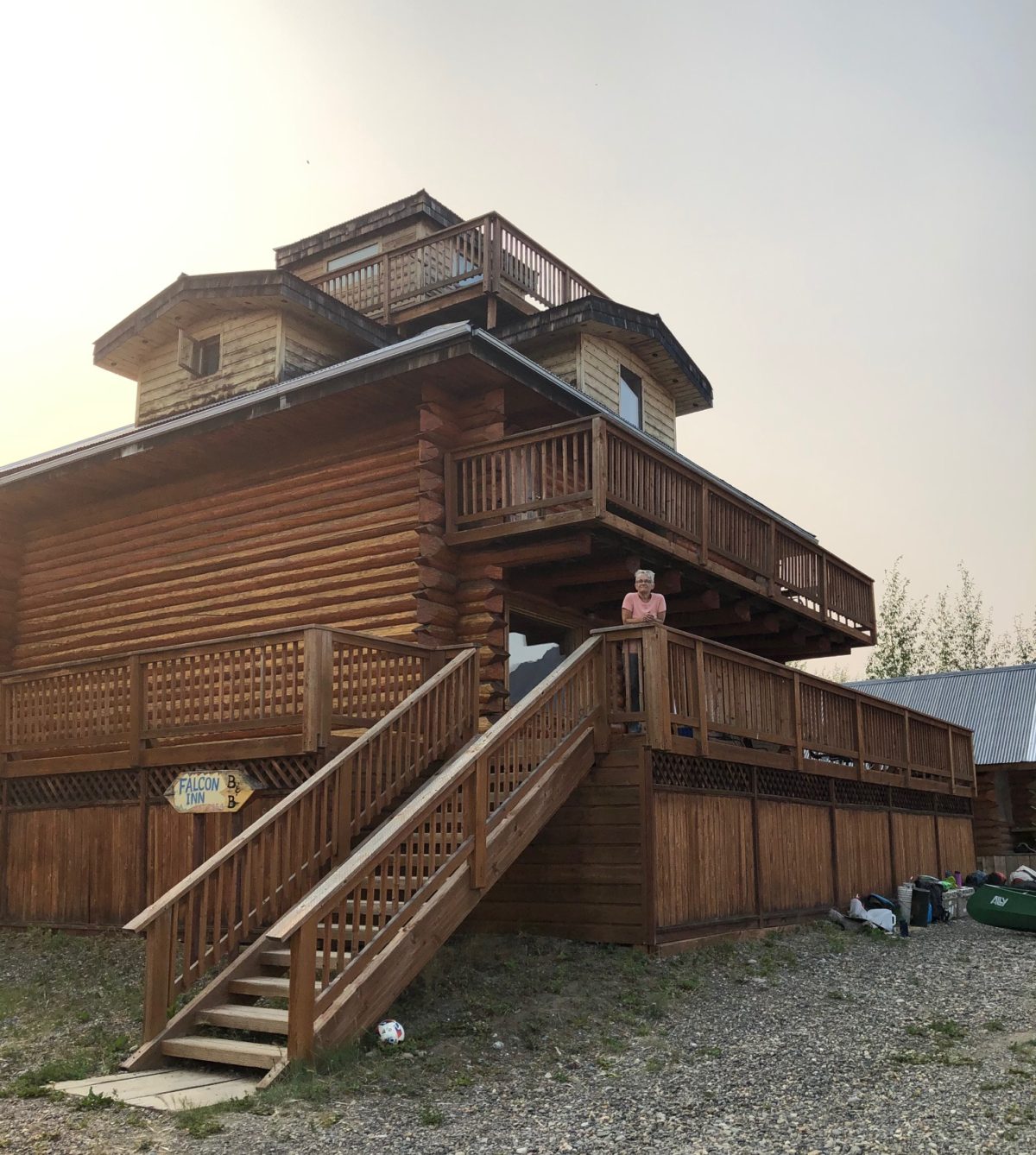
Charley River Facts
Unlike the Yukon River, the water in the Charley is clear and fresh. This National Wild and Scenic Waterway is about 108 miles long; completely in preserve and feeding into the Yukon River.
There is no road access to the Charley River and it is not reliably navigable by power boat. Most recreational users will fly in and take river rafts down the river. It is not a simple river. Conditions can vary from fast moving rapids to low water flats where you have to walk your boat. We did not do this, but our guide had. It sounded fun, but complicated.
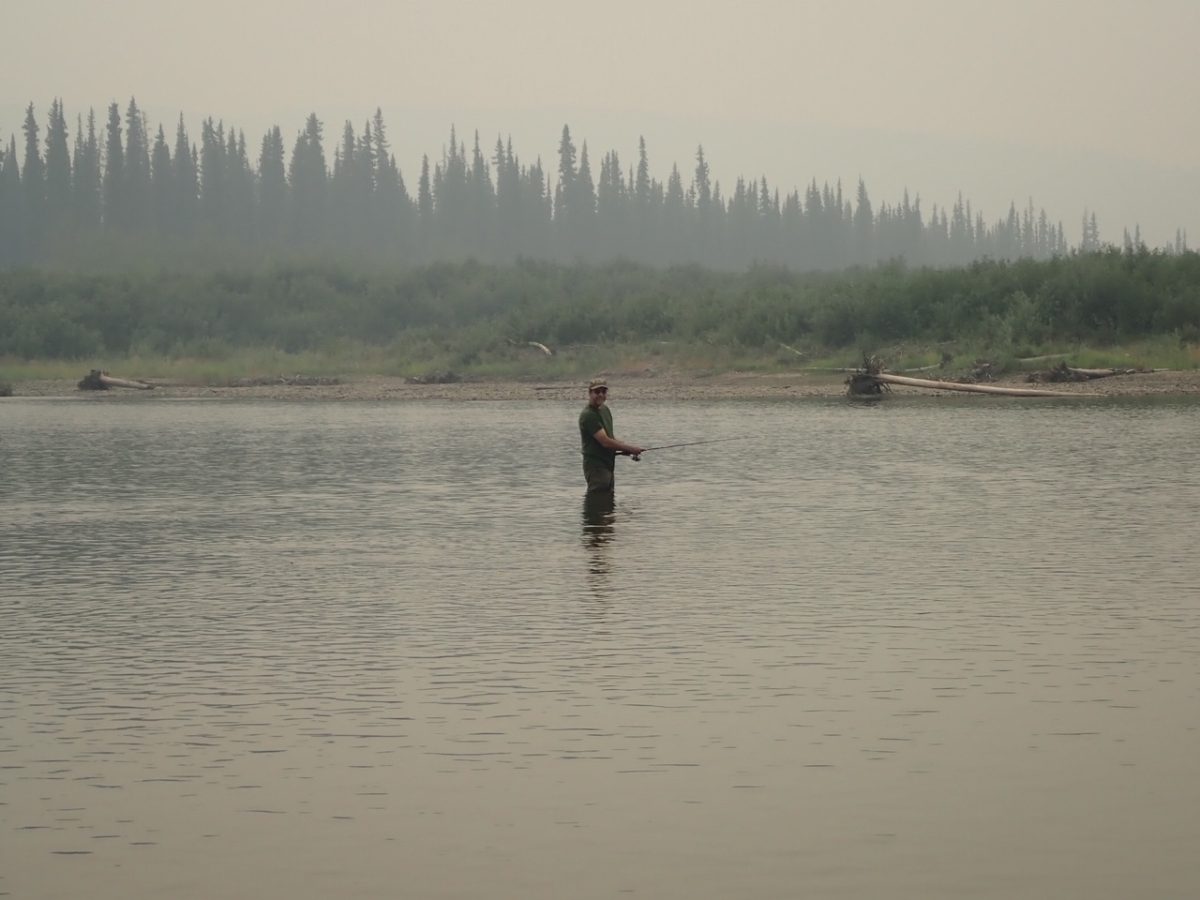
On our trip we stopped at the mouth of the Charley where it fed into the Yukon. It is neat to see the line where the clear water meets the silty water. We spent the morning there, fishing and swimming. That was lovely. The water was cool and clear, not too deep and with a nice sandy bottom; perfect for swimming on a hot Alaska day in July.
Significance of the Yukon-Charley Rivers National Preserve
Of course it is beautiful country, but you may wonder why this area was set aside as a National Preserve. Like most national park units, it protects natural, cultural and historic places.
Nature
The natural part is clear … as you drift along the river you will see towering cliffs, bluffs and rolling hills, thick boreal forest, islands and sandbars, and a multitude of plants and flowers, especially in the brief summer months. We also passed by the oldest rocks on the river and looked for fossils. They say the rocky cliffs here are over 600 million years old – a geologist’s dream.
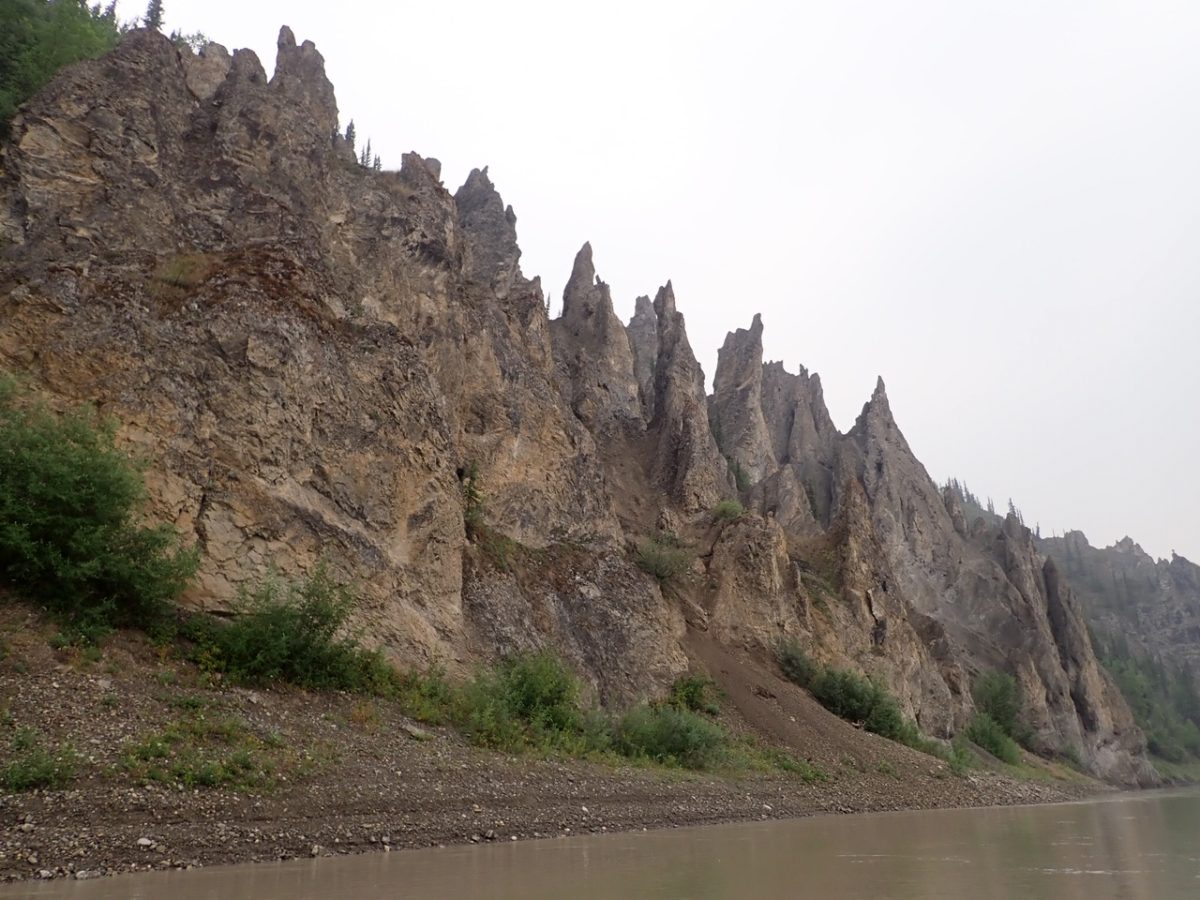
Culture
The area has a long history. In fact, it is much less populated today than it was in bygone eras. For years, the native Han Athabaskan used the river as their traditional hunting and fishing grounds. Archaeologists have found relics of this past as well as old village sites. Alaskans still use the area for subsistence hunting and fishing. We saw “fish wheels” – an interesting contraption used to scoop up the salmon as they pass by on their way to spawn.
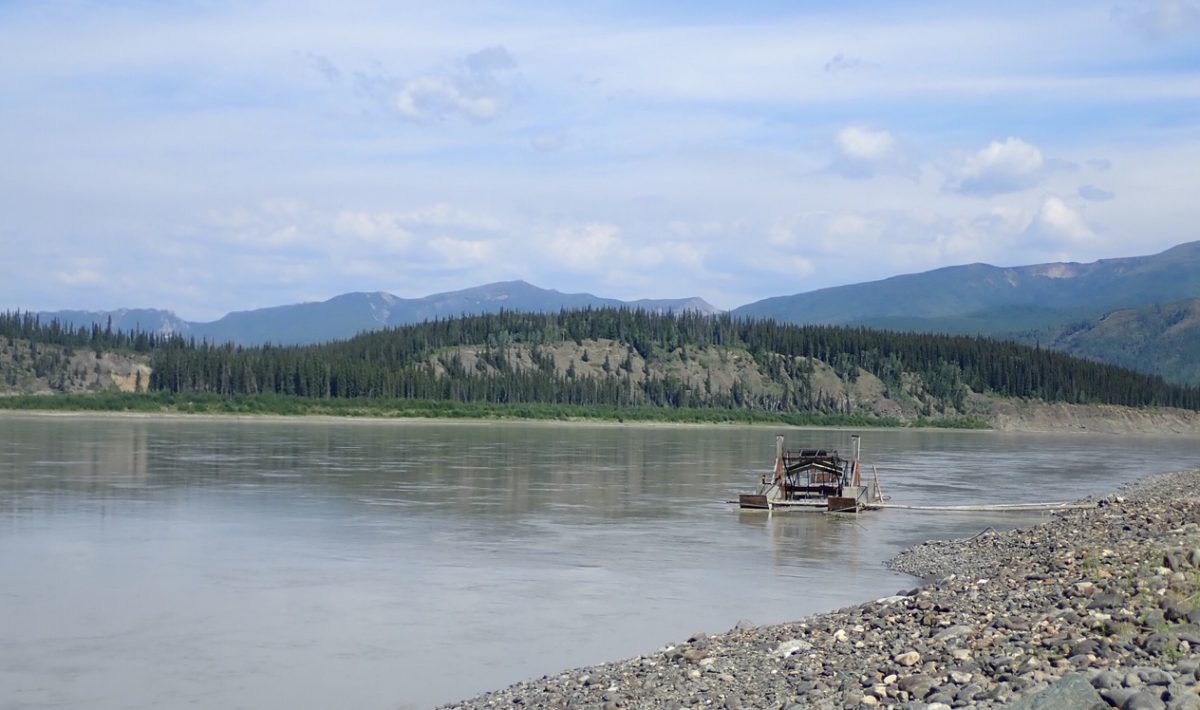
History
The preserve also protects history of the Klondike-Alaska gold rush. Not only are there old log cabins built by prospectors, you can also hike to a mining camp at Coal Creek and check out an old dredge there. It is just one mile off the river, walking from Slaven’s Roadhouse – an original roadhouse from the gold rush days preserved by the National Park Service.
We visited the ranger who lives there in the summer with his family on the second floor. The first floor is open to visit and in bad weather, folks even can stay there; keeping warm at the old wood stove. There are relics of the gold-mining days all around and the ranger can tell you more about the history. The ranger and his family are really nice. They seemed to enjoy having visitors. They said they only get a few hundred people stopping by during a summer.
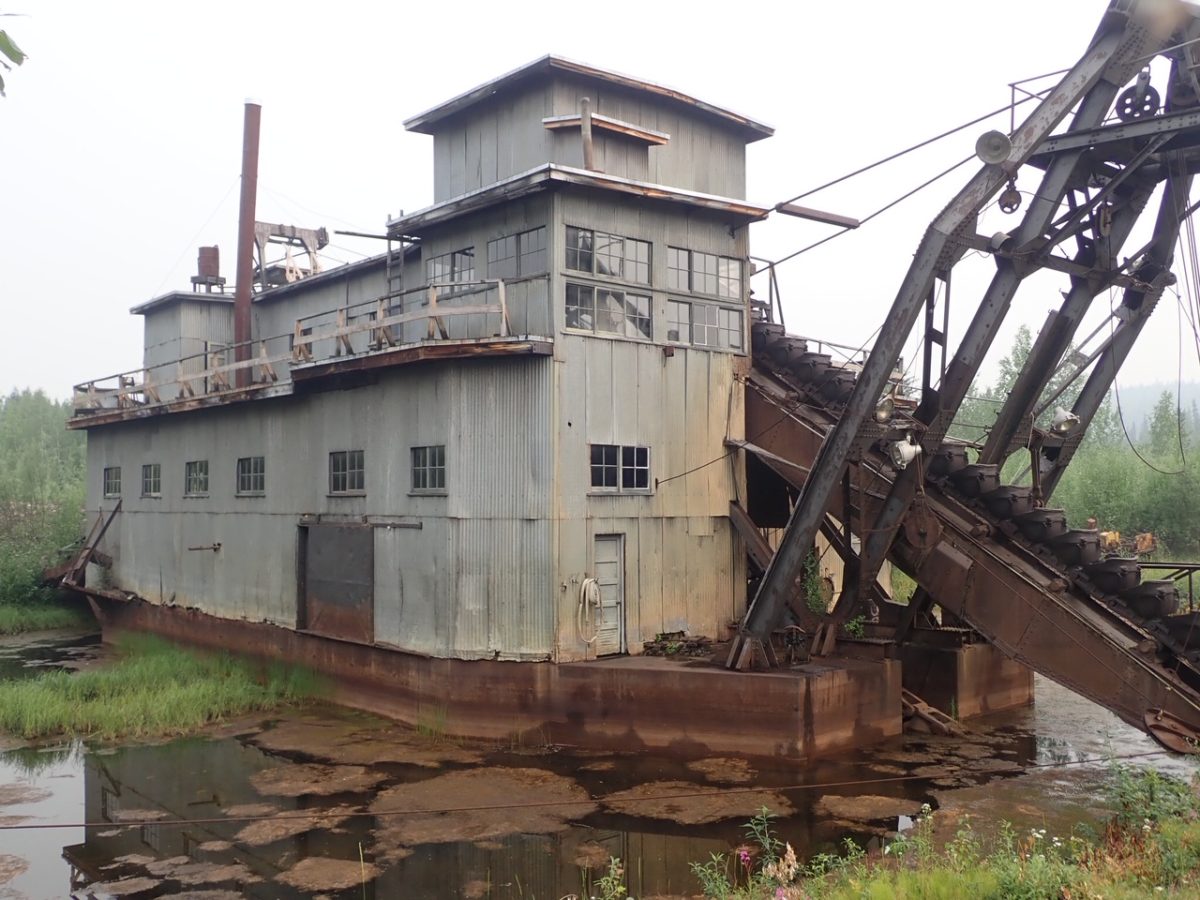
It is really interesting to walk up to the dredge – although be prepared for mosquitos! It was much larger than we expected. We could walk all through it, along gangplanks and up rickety old stairs to move from level to level. It looked just like it would have when it was finally deserted in the mid-70’s. This contraption could move over 24 football fields worth of rock in a day! It is hard to imagine how loud this must have been and how environmentally devastating. They would just come in and plow down the trees in a whole area, then dredge up all the rock right down to bedrock; with giant sifting tables to separate the gold and simply spew out the rest of the rock into huge tailing piles.
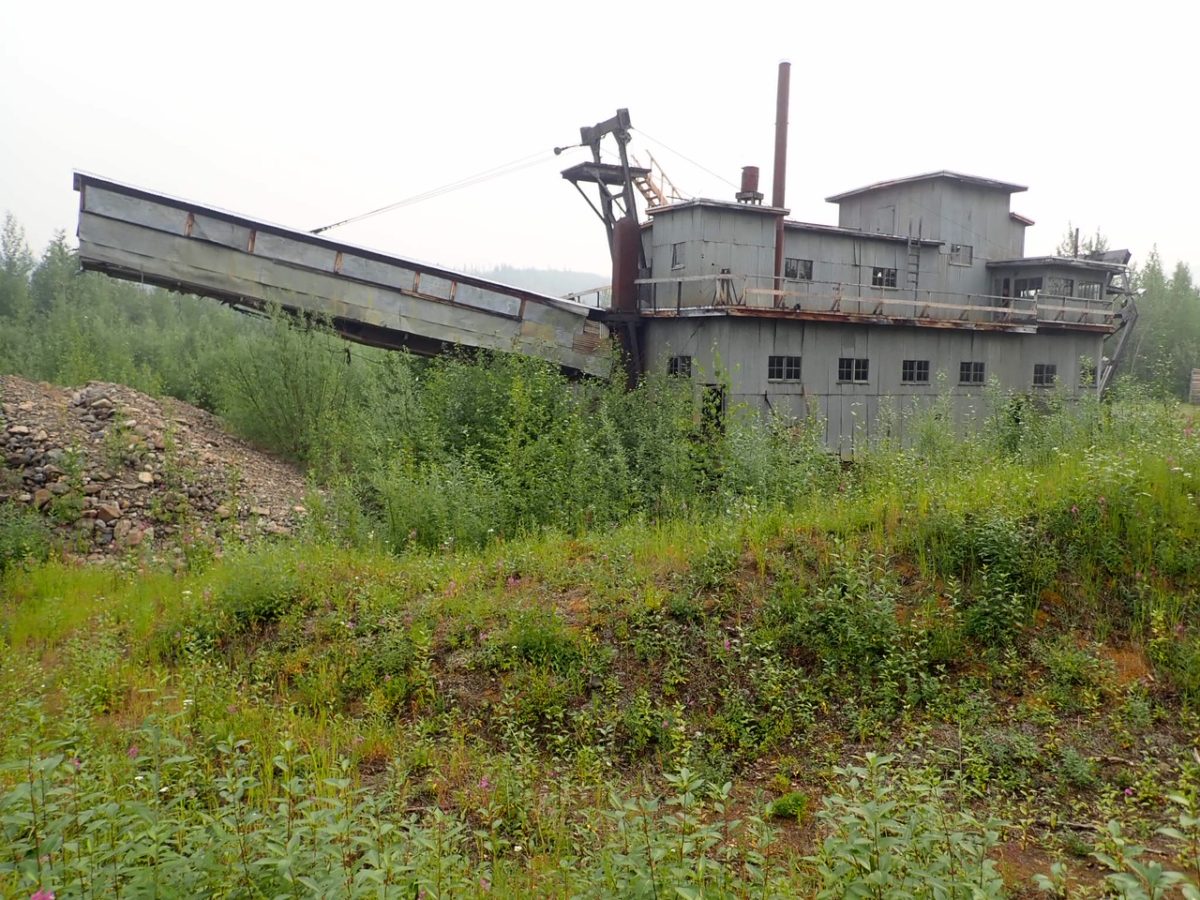
Wildlife
Today the preserve is a haven for wildlife… We saw tons of tracks. On each sandbar we stopped at we would find bear, moose and wolf tracks, but the animals themselves were elusive. We saw only one bear and one moose during our 7 days along the river. But that was okay. We were sure to keep “bear-safe” camps and kept our bear spray handy just in case!
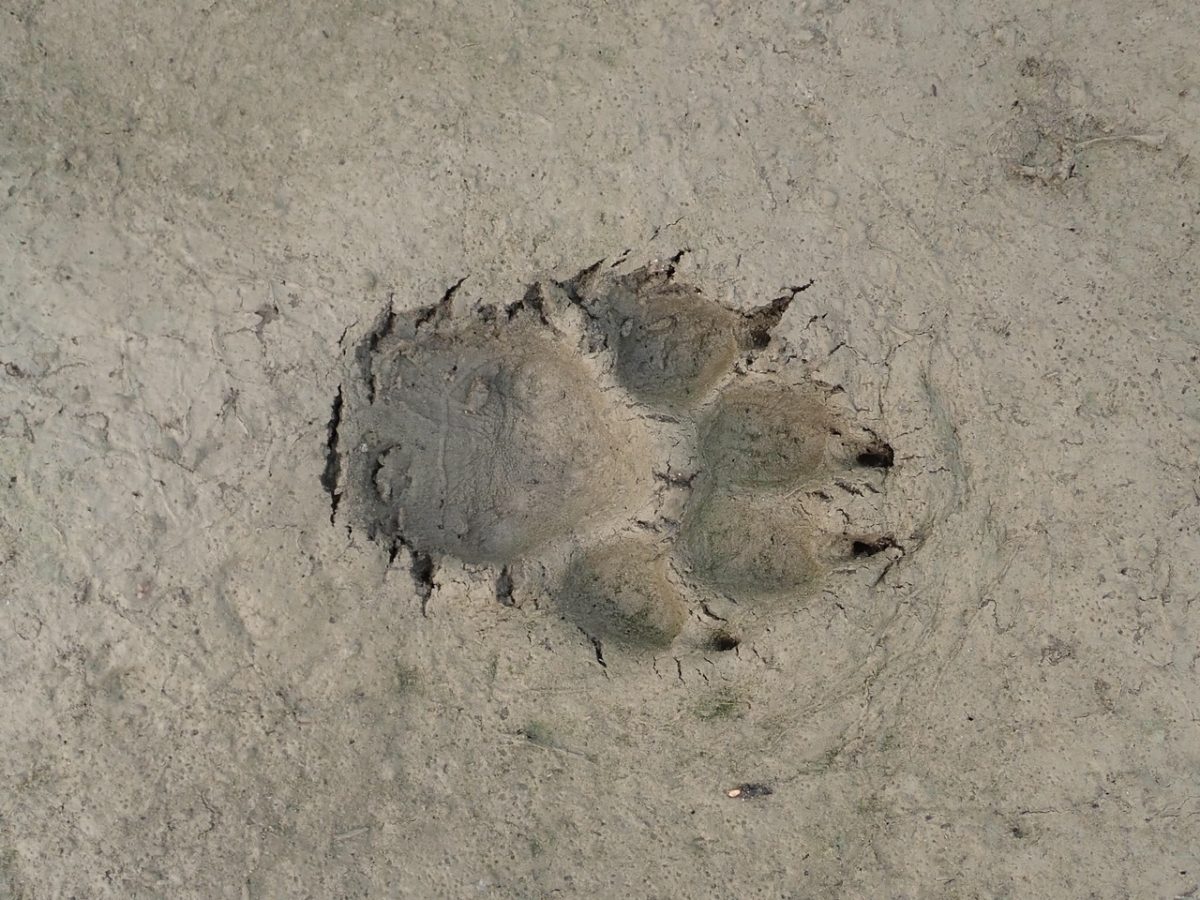
We did see a river otter. That was fun. It was swimming near our camp at the confluence of a creek and the river. We watched it swim up to the edge of the creek, then raft back down the river on the riffles, over and over. It was having fun!
The river is also home to many birds, especially peregrine falcons. You can see them and their nests on the high cliffs down stream from Slaven’s Roadhouse. We also saw quite a few Eagles. One even greeted us from the sandbar in Eagle! We saw them sitting on the sandbars and perched atop the black spruce trees. The most common bird were the Bank Swallows, flitting in and out of their nests on the sand banks. We were also fortunate to see a flock of Scoders, flying in formation high above our heads. There must have been at least 100!
Things to Bring on a Canoe Trip on the Yukon River
We took a guided river trip with Arctic Wild, although we did meet folks who were doing it on their own. Just be prepared … there are no places you can stop for extra supplies and you can’t depend on seeing anyone if you need help. We sure wouldn’t go out there without a Satellite phone or some way to communicate.
Our guide gave us a list of what we needed to bring. Along with the standard camping stuff, we noted a few things that were especially important:
- Rubber Boots or Waders – you will be in and out of the water, beaching boats, and much of the water’s edge is sludgy silt so you will get muddy!
- All Season Clothes – it was so nice when we left Fairbanks that we were tempted to bring just our summer wear, but we were glad that we brought clothes for all temperatures. The first few days were hot and sunny, but the weather turned on day 5 and it was rainy, windy and cold! It’s Alaska, so be prepared for anything.
- Water Filters – unlike the glacier fed streams in Aniakchak, on the Yukon you can’t just drink directly from the river. There are lots of clear side-streams, but you will need to filter the water for drinking.
- Umbrella – you might think that bringing an umbrella on a canoe trip is slightly silly, but we used ours almost every day … for a sun-shade; to capture the wind like a sail; as a wall you can hide behind when you need to go pee on a beach; and oh yeah, to protect yourself from the rain!
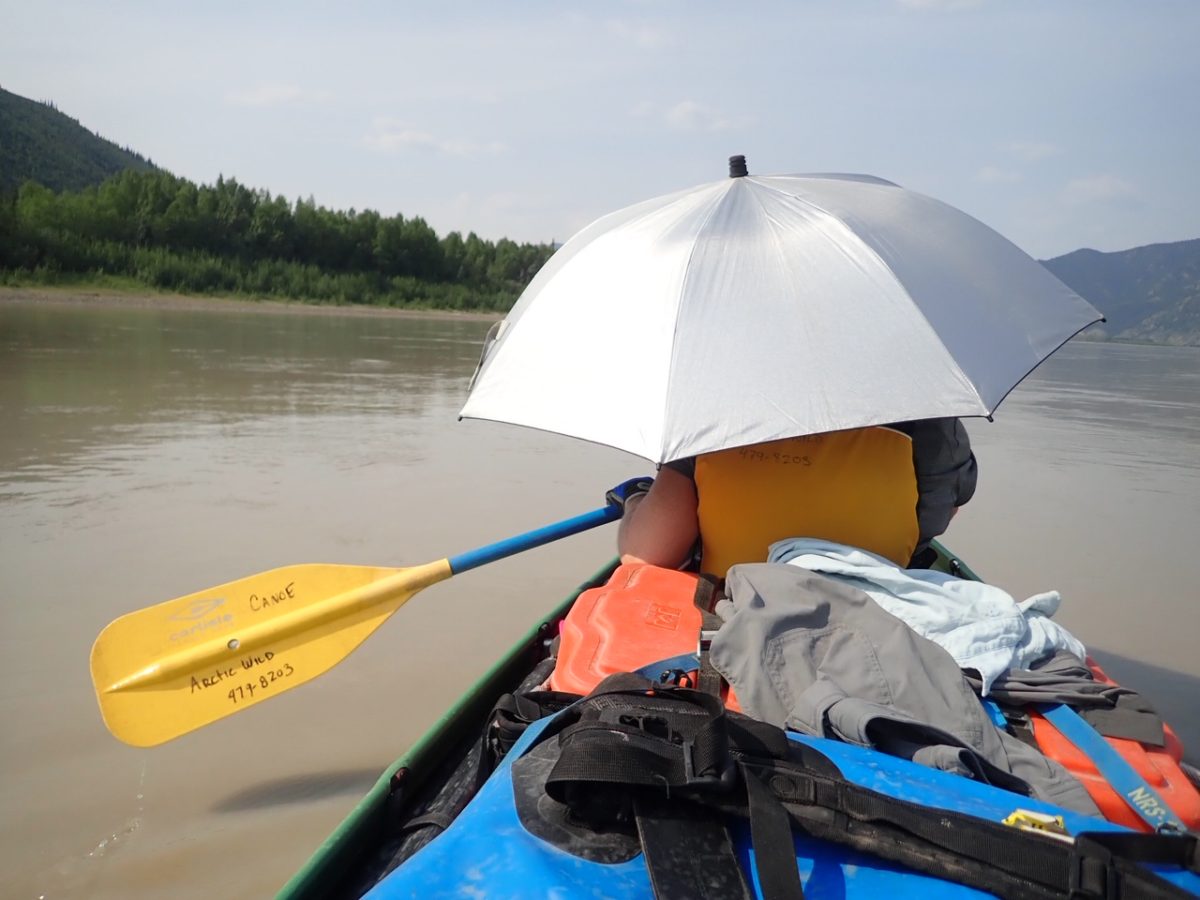
- Visene or Eye Wash – one thing that was not on the list, but we were glad to have was Visene. Unfortunately forest fires are a fact of life in Alaska – most started by lightning. When we were visiting, there were more than 200 fires in the state and many in the preserve. There, as long as they aren’t threatening private property or structures, they just let them burn. It is a natural way for the forest to regenerate itself. We paddled right past a fire and we could see the flames. At times the smoke was so thick it felt as if we were paddling through a thick fog. It was actually quite eerie.
Alaska – a Land of Adventure
It was quite the adventure visiting the Yukon-Charley Rivers National Preserve. This is mainly untouched wilderness … no roads, no trails, just the river. Whether you fly in or drive to the end of the gravel road; it will be quite the process. Not for the timid or the impatient. Everything there is on “Alaska time” – flowing like the river and letting things unfold slowly before you …
